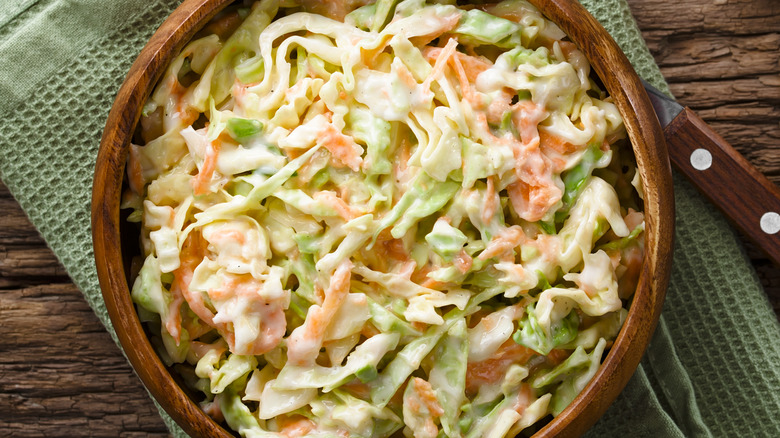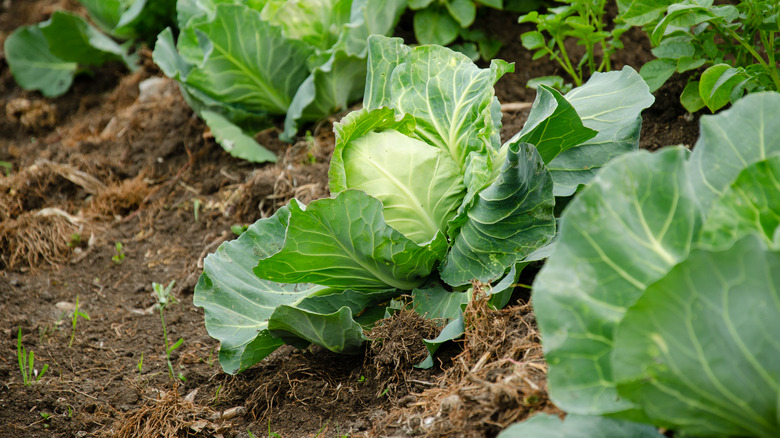Here's Where The Name Coleslaw Comes From
Coleslaw is often a staple at picnics, potlucks, and backyard cookouts. It can be as simple or as jazzy as you want it to be. If you're short on time and energy, you can buy a premade tub from the grocery store or you can whip up a simple version with a bag of precut veggies and a ready-made dressing in a bottle. If you're ready to embrace your inner chef, you can go all out and try a spicy recipe where you grate your own cabbage, slice some jalapeños, and turn things up with coconut milk and a Sriracha dressing.
According to NPR, coleslaw originated with the ancient Romans, who made a similar dish using cabbage, vinegar, eggs, and spices. The introduction of the dish to the United States can be traced back to Dutch immigrants. The ingredients are important to make coleslaw what it is. If the recipe doesn't contain cabbage, per The New York Times, it's just slaw.
Origins of coleslaw
So why is the side dish called coleslaw? The name can again be traced back to the Dutch. What's Cooking America explains that it is a 19th century word that started in the United States. Coleslaw (or the similar cold slaw) is from the Dutch word "kool sla." "Kool" means cabbage and "sla" means salad. Makes sense, huh? Although we traditionally serve cabbage salad cold, the Dutch likely didn't.
The dressings for coleslaw are traditionally mayonnaise or vinegar-based, NPR states, and both versions have deep roots in the U.S. In a cookbook from 1770, there is a recipe featured from a Dutch landlady for thinly sliced cabbage with a dressing of vinegar, melted butter, and oil. Mayo-based recipes started popping up after the condiment was invented in the mid-18th century. So next time you decide to make coleslaw, don't forget the cabbage, or you better just call it plain, old slaw.

